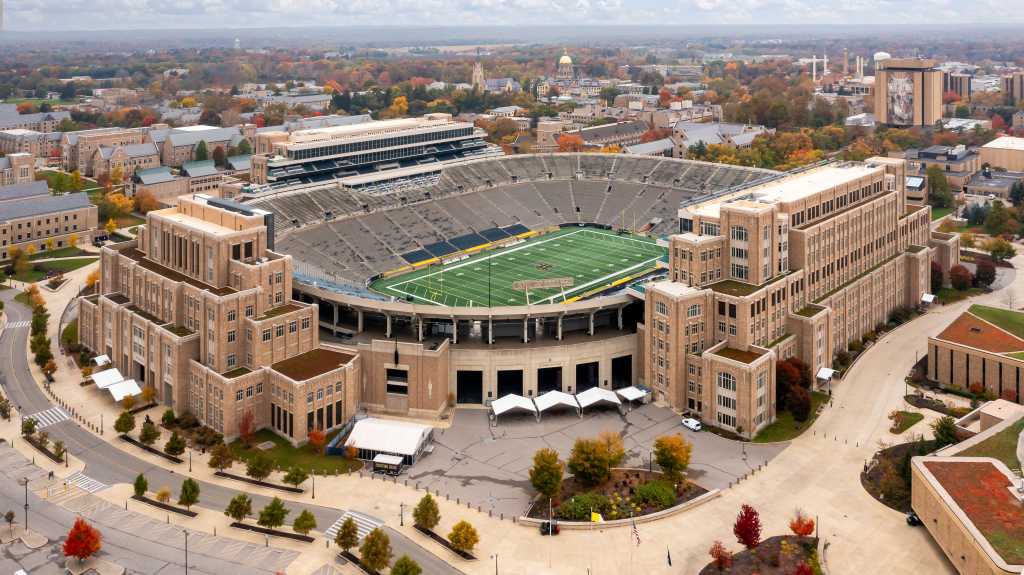- There are plans to add virtual reality features so fans can view player highlights and track plays in real time.
- University event personnel are able to leverage network data to improve crowd control and perform security monitoring.
- Notre Dame’s Wireless Institute will be able to use the network as a live lab for conducting cutting-edge research into IoT, augmented reality and AI.
- The network will serve as a central hub for an expansion of Wi-Fi 6E across the campus, providing high-speed connectivity for students, faculty and administrators.
- The technology is opening doors to innovative projects such as using IoT devices connected to the Wi-Fi to monitor the growth of grass on the field. The football field is artificial turf, but a layer of grass is laid down for special events, such as a recent soccer match between Cheslea FC and Celtic FC. “We never anticipated how far we could push this technology,” Atkins says.
- The project also included movable Wi-Fi structures that can be taken onto the field to accommodate events such as concerts, movie nights and other special events. For example, last year there was a ‘Flick on the Field’ event at the stadium, where the inspirational football film ‘Rudy’ was shown. (Rudy tells the real-life story of Daniel “Rudy” Ruettiger, who overcame obstacles to eventually fulfill his dream of making the Notre Dame football team.)
Upgrade project faced challenges
Notre Dame’s iconic stadium, designed by the same architects behind Chicago’s Comiskey Park and New York’s Yankee Stadium, was built in 1930 and became known as “the house that Knute Rockne built,” in a nod to the legendary coach’s effort to get the facility built.
By 2020, the existing wireless infrastructure was struggling to keep pace with the demands of modern fans who were on their phones talking, texting, shooting videos, taking selfies, posting content on social media, checking out other online sites, and generally consuming huge amounts of bandwidth.
Notre Dame wanted to meet those basic requirements but also wanted to add advanced features like interactive stadium activities, real-time stats and video streaming.
In 2023, Notre Dame began working with PIER Group, an Indiana-based technology service provider focused on education and research markets, to design, plan and implement the Wi-Fi upgrade. The planning and strategizing phase took about a year.
There were hurdles to overcome. First, the stadium has thick concrete walls which impede the wireless signal. Second, the IT team had to work around a packed event schedule that included football games, as well as other events such as graduation ceremonies and the international soccer match.
The physical installation of Aruba outdoor access points began in early 2024 and took around six months to complete. The access points were strategically placed for maximum efficiency, and they were creatively concealed within the stadium’s infrastructure to maintain the aesthetic appeal of the historic facility. For example, the team used 3D printing to design and build enclosures for the APs that were placed all over the stadium, even in little boxes attached to the hand railings that lead fans up the steps to their seats.

